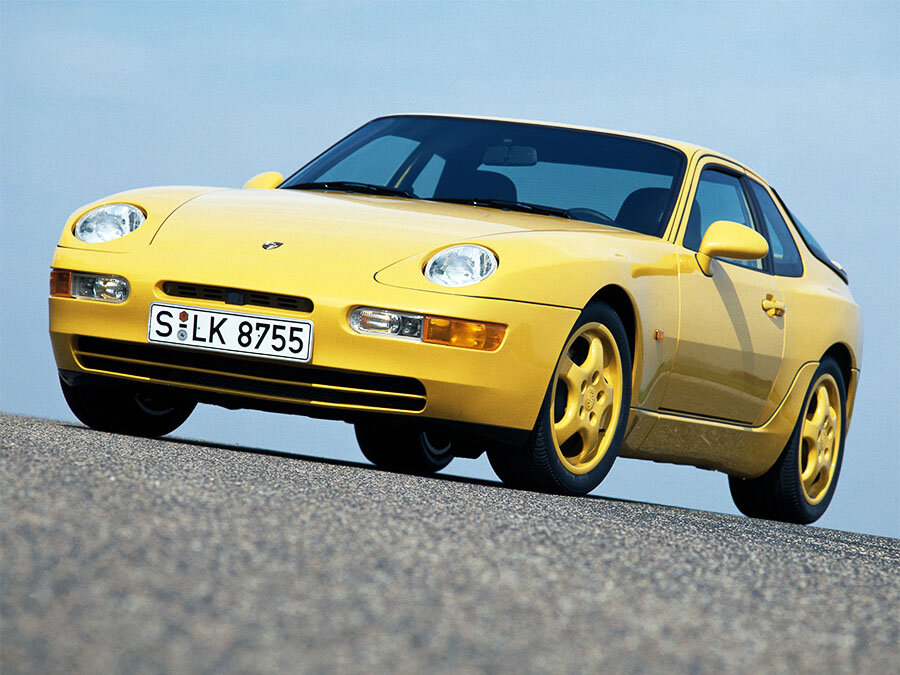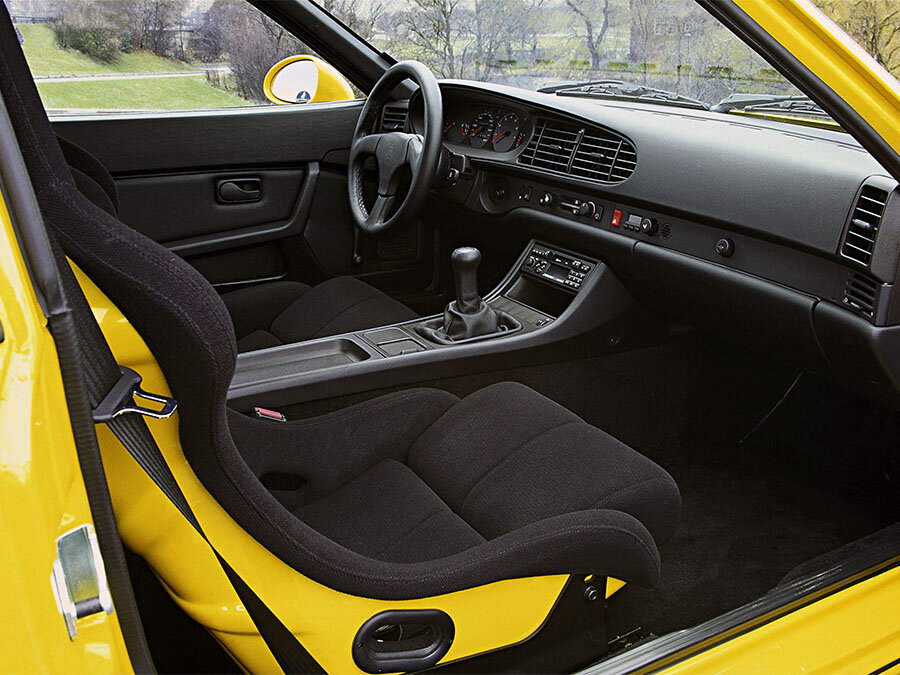Guide: Porsche 968 Club Sport - Historical & Technical Appraisal
/BACKGROUND
The early 1990s recession hit Porsche as hard as any of the other big sports car manufacturers.
It wasn’t until the 993-based 911 arrived in September 1993 that things steadily began to improve for the firm. By the time the all-new Boxster was launched in 1996, Porsche were back on a secure footing and the global economic outlook had improved dramatically.
However, before the Boxster was ready, Porsche needed to produce an interim model based on the old four cylinder 924 / 944 which had been around in one shape or another since 1975.
Unfortunately, the resultant 968 was a commercial disaster.
Built on an ageing platform at a time when Porsche’s image was suffering a hangover from the 1980s, sales of the overpriced model were massively down on its predecessors. Hoped-for numbers of 25,000 units per annum were missed by a mile; only in the first year of production did sales manage to exceed 5000 cars.
While the standard 968 was panned by critics and snubbed by customers, there was undoubtedly the potential for a fine machine. It just had to be faster, lighter and much, much cheaper.
Thankfully, Porsche responded.
Little more than a year after the original 968 had been launched, they introduced the 968 Club Sport.
Unveiled at the Paris Motor Show in October 1992, the Club Sport entered production immediately and did much to salvage the 968’s tattered reputation.
Stripped of most superfluous equipment, the Club Sport was targeted at Porsche’s loyal band of customers that wanted a driver’s car above anything else.
Owing to a lack of safety equipment, the Club Sport wasn’t US legal and Porsche officially only offered it in Europe, the UK, Japan and Australia.
CHASSIS
Like all 968s, the Club Sport used a steel unibody shell that was heavily derived from the outgoing 944 S2.
Independent suspension was via MacPherson struts with alloy lower control arms at the front and semi trailing arms with torsion bars at the rear.
The Club Sport came with stiffer dampers than the standard 968 and the ride-height was dropped by 20mm.
The 17 x 7.5-inch front and 17 x 9-inch rear wheels that were usually an option came as standard.
Power steering was retained along with the normal brake system. This comprised Bosch ABS, Brembo four-piston calipers and ventilated discs of 297mm diameter front and 300mm rear.
The standard 74-litre fuel tank installed underneath the boot floor also stayed.
ENGINE / TRANSMISSION
In the engine bay was Porsche’s Type M44/43 engine from the regular 968 albeit with the stylised plastic mouldings removed and a single radiator cooling fan (instead of two) to save weight.
Compared to the 944 S2 motor from which it was derived, the single overhead camshaft M44/43 unit was significantly revised to give it more power, a flatter torque curve, lower emissions and improved fuel efficiency.
Perhaps most importantly, the 968 was equipped with a new VarioCam system that varied the timing of the intake valves by adjusting the tension on the timing chain connecting the intake and exhaust camshafts. The result was much improved bottom and mid-range torque.
Other new equipment not found on the 944 S2 was a big-bore two-into-one exhaust system, an uprated intake manifold that enabled the engine to rev higher plus forged and lightened pistons and rods. Like the 964, the underside of the pistons was now cooled by an oil spray.
The heavy old torsional vibration damper for the crankshaft was deleted.
Bosch Motronic M2.10 engine management replaced the 944 S2’s outgoing L-Jetronic system. Compression was increased from 10.9.1 to 11.0:1. Displacement stayed at 2990cc thanks to a bore and stroke of 104mm and 88mm respectively.
Power output rose from 211bhp at 5800rpm to 240bhp at 6200rpm. The torque rating was now 225lb-ft at 4100rpm compared to 206lb-ft at 4000rpm.
BODYWORK
Cosmetically, the biggest difference between the standard 968 and the Club Sport was the addition of lurid body coloured wheels and ‘Club Sport’ decals emblazoned down each flank. The decals were available in black, red or white.
Both features could be deleted at no cost if the buyer wanted a more discrete appearance.
To further save weight, Club Sports came without a rear wiper and non-heated washer jets. There was also a smaller battery and lightweight wiring loom (made possible because of the greatly reduced electrical equipment).
A body coloured rear spoiler was standard.
INTERIOR
Undoubtedly the most far-reaching alterations were made inside where many of the regular 968’s luxurious fixtures and fittings were discarded to save weight.
The electric windows, electric mirrors, automatic heater control, alarm and even the radio and antenna were deleted along with most of the noise insulation.
The seats were switched to lightweight Recaro buckets with fireproof fabric upholstery and body coloured backs. The rear seats were removed altogether.
Porsche ditched the four-spoke airbag steering wheel for a chunkier three-spoke sports wheel without an airbag.
Lightweight door cards from the 944 S2 were installed and the usual deep-pile carpet was replaced with much thinner material.
Only one upholstery colour was available: black.
OPTIONS
Initially Porsche offered a choice of five exterior colours: Speed Yellow, Guards Red, Grand Prix White, Maritime Blue and Black. However, this decision was soon reversed and buyers could select from the full spectrum of colours including Paint To Sample (PTS).
Optional extras included the reinstatement of a stereo, an electric sunroof and air-conditioning. If air-conditioning was specified, Porsche fitted the standard (larger) battery and dual radiator cooling fans.
There were also three bundled option packs: the Comfort Pack, Security Pack and Sport Pack.
The Comfort Pack came with regular seats (instead of the Recaro buckets) plus electric windows and mirrors.
The Security Pack included central locking, an alarm and locking wheel nuts.
Most desirable though was the Sport Pack (option code MO30). It comprised stiffer springs, shocks and anti-roll bars, larger 304mm ventilated front brake discs and a Torsen limited-slip differential with 40% locking factor.
WEIGHT / PERFORMANCE
To avoid the need to re-apply for type approval, Porsche downplayed the Club Sport’s performance improvements and suggested there was little difference to the normal 968 Coupe.
Officially, the Club Sport was 50kg lighter (1320kg) and had a top speed of 158mph (up from 157mph). The 0-62mph time dropped to of 6.1 seconds (down from 6.5).
However, the top speed actually rose to 162mph and, thanks to the considerable weight saving, 0-62mph was now 5.8 seconds.
LAUNCH
The new variant proved a massive hit with road-testers, several of whom proclaimed it among the greatest driver’s cars of its era.
Unfortunately though, the commercial outlook for the 968 was still bleak; the hardcore Club Sport was not the solution to hit an over-optimistic global sales target.
PRODUCTION
Production began in October 1992 and the first right-hand drive examples arrived in spring 1993.
1923 Club Sports were built in total: 856 for the 1993 model year, 536 for 1994 and 531 in 1995.
For the 1994 model year, redesigned soft-spoke 17-inch Cup Design wheels became standard.
Production stopped when the 968 was discontinued in the summer of 1995.
Text copyright: Supercar Nostalgia
Photo copyright: Porsche - https://www.porsche.com


































